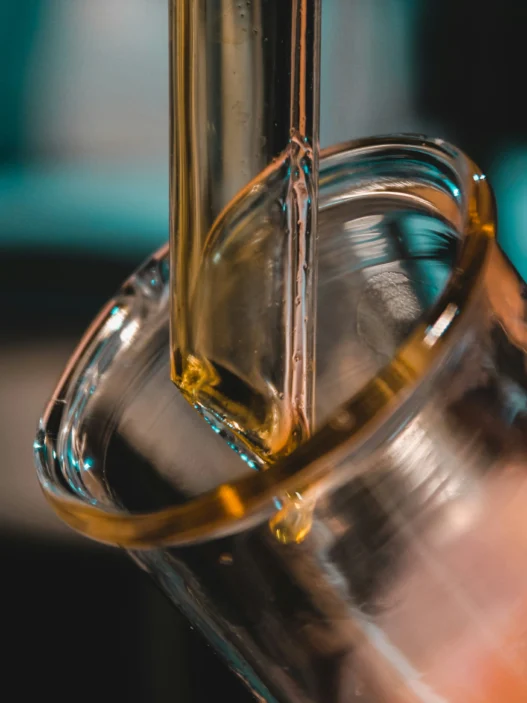Betaine, also known as trimethylglycine, is a compound that plays a significant role in various biochemical reactions within the human body. Its relevance to everyday life lies in its potential health benefits, such as promoting heart health, aiding in digestion, and supporting liver function. Additionally, betaine is found in foods like spinach, beets, and whole grains, making it easily accessible to individuals looking to incorporate it into their diet. Overall, betaine serves as a valuable component in maintaining overall health and wellness.
Table of Contents:
- 💡 Commercial Applications
- ⚗️ Chemical & Physical Properties
- 🏭 Production & Procurement
- ⚠️ Safety Considerations
- 🔬 Potential Research Directions
- 🧪 Related Compounds
💡 Commercial Applications
Betaine, also known as trimethylglycine, has several commercial and industrial applications. It is commonly used as a feed additive in animal nutrition to improve growth performance and nutrient utilization in poultry, swine, and cattle. Betaine is also used in the production of cosmetics and personal care products for its moisturizing properties.
In the pharmaceutical industry, betaine has shown promise as a potential treatment for conditions such as high homocysteine levels, which are associated with cardiovascular disease. It is also used in some over-the-counter medications as a digestive aid to help with acid reflux and indigestion. Additionally, betaine is being researched for its potential role in reducing inflammation and oxidative stress in various health conditions.
Overall, betaine’s commercial and industrial applications extend beyond animal nutrition and personal care products to include potential pharmaceutical uses in the treatment of various health conditions. Its diverse range of uses highlights the importance of further research into the potential benefits of this compound.
⚗️ Chemical & Physical Properties
Betaine is a crystalline substance that typically appears as colorless or white in appearance. It has a slight characteristic odor that is faint and not easily detectable to the human nose.
The molar mass of Betaine is approximately 117.15 g/mol, and its density is around 1.09 g/cm3. In comparison to common household items, Betaine has a higher molar mass compared to water (18.02 g/mol) and lower density than olive oil (0.92 g/cm3).
The melting point of Betaine is around 293-300°C, while its boiling point is approximately 293-300°C. In comparison to common household items, Betaine has a higher melting and boiling point than water (0°C, 100°C) and lower than vegetable oil (around 175-190°C for both).
Betaine is highly soluble in water and has a low viscosity. In comparison to common household items, Betaine has higher solubility in water compared to sugar and salt. It also has lower viscosity than honey and maple syrup.
🏭 Production & Procurement
Betaine, a naturally occurring compound found in plants and animals, can be produced synthetically in a laboratory setting. The process involves the reaction of choline chloride with sodium hydroxide, followed by neutralization with hydrochloric acid to form betaine hydrochloride.
Betaine can also be obtained from natural sources such as sugar beets, wheat bran, and spinach through extraction and purification processes. These natural sources are harvested, processed, and refined to extract betaine in its pure form. Once obtained, betaine can be transported via various modes such as road, rail, air, or sea to reach its destination.
The transportation of betaine typically involves packaging the compound in drums, bags, or bulk containers to ensure its safe and efficient delivery. Depending on the distance and urgency of delivery, betaine can be transported using trucks, trains, ships, or planes. Special care is taken to ensure that betaine is stored and transported in appropriate conditions to maintain its stability and effectiveness.
⚠️ Safety Considerations
Safety considerations for Betaine should be carefully taken into account. While Betaine is generally recognized as safe for consumption, there are potential side effects to consider. Overconsumption of Betaine can lead to gastrointestinal discomfort, including nausea, diarrhea, and stomach upset. Individuals with kidney or liver disease should exercise caution when taking Betaine, as it may exacerbate their conditions.
Betaine, also known as trimethylglycine, is a naturally occurring compound found in plants and animals. It acts as a methyl donor in various biochemical reactions in the body. Betaine plays a significant role in the metabolism of homocysteine, helping to maintain healthy levels in the blood. It is also involved in the synthesis of creatine, an important compound for muscle energy production.
Hazard statements for Betaine indicate potential risks associated with improper handling or consumption. While Betaine is generally considered safe for ingestion, excessive intake can lead to adverse effects. Accidental inhalation of Betaine powder should be avoided, as it may cause irritation to the respiratory tract. In case of contact with skin or eyes, immediate rinsing with water is recommended to prevent irritation.
Precautionary statements for Betaine include guidelines for safe handling and storage. Keep Betaine in a tightly sealed container in a cool, dry place away from direct sunlight. Avoid inhaling Betaine powder and wear appropriate protective gear, such as gloves and goggles, when handling the substance. If Betaine is ingested accidentally, seek medical attention immediately and provide the healthcare professional with information on the quantity consumed.
🔬 Potential Research Directions
Potential future research directions for Betaine include exploring its role in various physiological processes such as metabolism, liver function, and cardiovascular health. Studies may investigate the effects of betaine supplementation on liver health in individuals with conditions such as non-alcoholic fatty liver disease or alcohol-induced liver damage.
Additionally, research could focus on the potential benefits of betaine for athletic performance and muscle function. Studies may examine the effects of betaine supplementation on exercise performance, muscle strength, and recovery in athletes and individuals engaging in physical activity. Furthermore, the mechanisms by which betaine may improve exercise capacity and muscle function could be elucidated.
Furthermore, future research on betaine could investigate its potential therapeutic applications in various medical conditions, such as diabetes, obesity, and cognitive decline. Studies may explore the effects of betaine supplementation on insulin sensitivity, body composition, and cognitive function in individuals with these conditions. Additionally, research could delve into the underlying mechanisms by which betaine exerts its effects on these physiological processes.
🧪 Related Compounds
One similar compound to Betaine based upon molecular structure is Carnitine. Carnitine is a quaternary ammonium compound that plays a crucial role in the transportation of fatty acids into the mitochondria for energy production. Like Betaine, Carnitine contains a positively charged nitrogen atom, which imparts similar chemical properties in terms of solubility and reactivity.
Another compound with a similar structure to Betaine is Choline. Choline is a nitrogenous base that is essential for the synthesis of phospholipids and neurotransmitters in the body. Like Betaine, Choline contains a positively charged nitrogen atom and a hydroxyl group, which allows it to act as both a quaternary ammonium compound and a alcohol. This structural similarity gives Choline similar chemical properties to Betaine in terms of solubility and reactivity.
Another compound that shares a similar molecular structure with Betaine is Sarcosine. Sarcosine is a derivative of the amino acid glycine, and it plays a role in the metabolism of amino acids and neurotransmitters in the body. Like Betaine, Sarcosine contains a positively charged nitrogen atom and a carboxyl group, which gives it similar chemical properties in terms of solubility and reactivity. The structural similarity between Betaine and Sarcosine allows them to interact with similar enzymes and biological pathways in the body.





